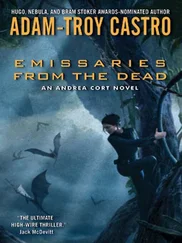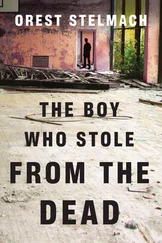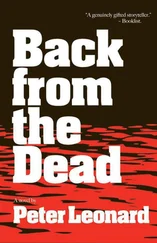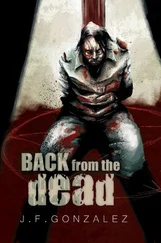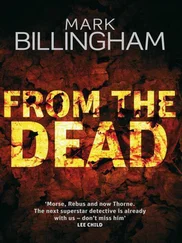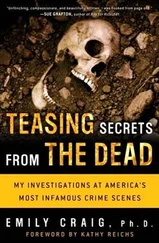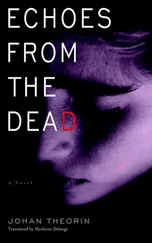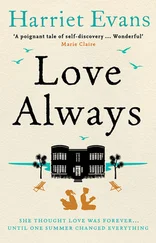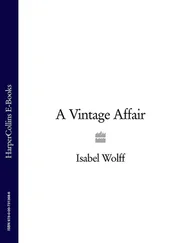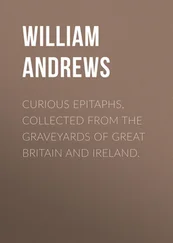As our investigation drew to a close, we had established irrefutable evidence that more than one third of Waco 's victims had sustained “non-heat-related trauma,” which included contact or close-range gunshot wounds, shrapnel wounds, and blunt-force trauma-all before their bodies had ever felt the fire. We all believed that the true figure was a lot higher than one third, though without the evidence to prove it, the medical examiners duly listed many victims' cause and manner of death as “undetermined.”
Members of the press continued-some still continue-to say that the Branch Davidians were all killed by the fire, but we knew that simply wasn't true. And though these reporters never hesitated to point an accusing finger at the federal government, they somehow still refuse to publicize the now-public autopsy findings, which prove conclusively that Waco ended in a mass murder-suicide orchestrated and carried out by the Davidians themselves.
As the days rolled on, our investigation developed a new focus: sect leader David Koresh. The charismatic figure had taken on a kind of near-mythic status, and there was even speculation that he and some of his henchmen had somehow escaped the inferno, fueled by a National Examiner “eyewitness report” of Koresh jumping into a getaway car at the end of a tunnel leading out of the compound. Unless we positively identified his remains, no one would ever be certain if Koresh lived or died. The last thing any of us wanted was for the self-styled messiah to earn some sort of mythic status that would inspire his cult to spring up again. And if he was by some chance alive, the FBI wanted him at the top of their Most Wanted list.
So, back in the lab, we were keeping a close watch for any remains that might be associated with Koresh. Our first break came on the afternoon of May 1, when pathologists began to examine body bag “MC- 08.” Our dentists had earlier obtained a model of the cult leader's teeth and they knew, almost by heart, what dental evidence they were looking for. They'd made it a matter of routine to check every body bag for Koresh's telltale stainless steel crown and missing premolar, and I'll never forget the sight of Rodney Crow, our chief forensic dentist, bending over MC-08 as we all held our breath.
Crow stood up slowly, straightening his back to the fullest. “That's him.”
“Are you serious?” asked someone hidden behind a mask.
“I'm serious. That's him.” A huge Cheshire-cat grin spread over Crow's face and then quickly disappeared. We had finally found David Koresh.
Koresh's postmortem exam the next morning followed the standard autopsy protocol, but given the high level of controversy surrounding his demise, a lot more people than usual made sure to check and double-check the evidence. Chip Clark, camera at the ready, never left Dr. Peerwani's side as the corpse was x-rayed, examined, and identified. It was standing room only around the gurney as we watched Dr. Crow make a detailed record of the dental evidence. Then Dr. Peerwani called me to his side as he began to sift through the burned debris and bones found near the victim's head.
“It looks like I may have a little job for you here, Emily,” he said in a low voice. “I'd like you to go get ready to piece this one together just as soon as I've collected the fragments.”
He refused to speculate about what I might find-and I too was finally learning not to “theorize ahead of the facts.” Still, I had reconstructed enough skulls shattered by gunshot wounds in the past five days that I could readily recognize the same type of injury here.
However, “Yes, sir,” was all I said. I backed off and signaled to Max Houck, who had finished at the crime scene and was now working with us in the morgue.
“This is going to be huge, Max,” I muttered under my breath. “I think we should do this together. I know I'd feel a lot more secure if a second pair of hands and eyes was involved each step of the way.”
Max nodded and we went over to the sink, laying out the toothbrushes, scissors, and knives we would need if we found remnants of tissue clinging to the bones. I filled my trusty blue plastic pan with warm soapy water, took off my double set of heavy protective gloves, and put on two pairs of thin surgical gloves instead. I was already a little nervous about doing this case, and I wanted all the manual dexterity I could muster.
Half an hour later, Dr. Peerwani had filled a metal tray with dozens of skull fragments, most of them burned, some no larger than a dime. He brought the tray over to our sink and ceremoniously handed it to me.
Naturally, there was a flurry of extra attention given to this all-important part of the autopsy. FBI agents, pathologists, and the other anthropologists jockeyed for better spectator angles, only to be nudged aside by Chip Clark, our intrepid photographer, who needed to get some preliminary photos before we started work. It was a little unnerving to have such close scrutiny as I delicately picked pieces of fragile bone from the tray, cleaned them off, and laid them out in some semblance of anatomical order-pieces from the face in one spot, bones from the back of the head in another, side pieces in a third.
Then, as often happens when I work, I forgot where I was, focusing only on finding each piece's proper place. Max and I made a good team, sharing our task wordlessly. Sometimes he could pick out a piece from the pile that matched the color of a piece I was holding. A few times we simultaneously picked up separate pieces whose fractured edges matched in shape or whose anatomical landmarks lined up. Once again, I thought of piecing together a three-dimensional jigsaw puzzle, though in this case huge sections of the puzzle were missing.
Nevertheless, by noon we were ready to start gluing the pieces together. On an ordinary day it would have been lunchtime, but we were both too engrossed to think of food. Instead, Max brought out the new two-part glue we had started using to reconstruct the skulls. It worked on wet items and hardened instantly, even expanding slightly to fill in gaps where necessary. It took two people to use it, though; one to hold the bone fragments together, the other to squeeze the applicator bottle. A tiny amount of watery liquid would dribble down into the crack between the bones, while the “gluer” quickly set down the bottle and picked up a small spritzer. Once the second element had been sprayed onto the skull-sometimes accompanied by a dramatic little puff of smoke-the chemical reaction was instant and irreversible. If the “bone handler” had remained immobile throughout the process, the bones were now permanently fused.
This painstaking process had to be repeated with each new matching fragment, so Max and I took turns holding and spraying. Even so, the strain of holding the bones perfectly still was nerve-wracking, and each of us found that after only a few minutes our fingers started to tremble or even to curl up with muscle cramps.
Word had reached the break room that we had started to glue Koresh's skull back together, and we were abruptly joined by a curious matinee audience who had suddenly agreed that this was indeed more important than lunch. Large portions of Koresh's frontal and left parietal bones were missing but, gradually, before all our eyes, the skull took shape in my hands and the gunshot wounds emerged.
Max and I were so focused, we didn't even realize that the room had become eerily quiet. The half-dozen men watching over our shoulders hadn't said a word since they spotted the first evidence of the gunshots, but I could hear some of them breathing, their mouths only inches from the back of my neck. Maybe it was their warm breath, or maybe it was just nerves, but when I put the last critical pieces in place, the hairs on the back of my neck started to tingle. Max's eyes met mine, and I saw his pupils dilate-an uncontrollable reaction signaling excitement and pleasure. I suspect that my eyes mirrored his, because I felt as if I were blushing, the blood pounding in my ears. I was sure the guys standing behind me could hear my heartbeat.
Читать дальше

